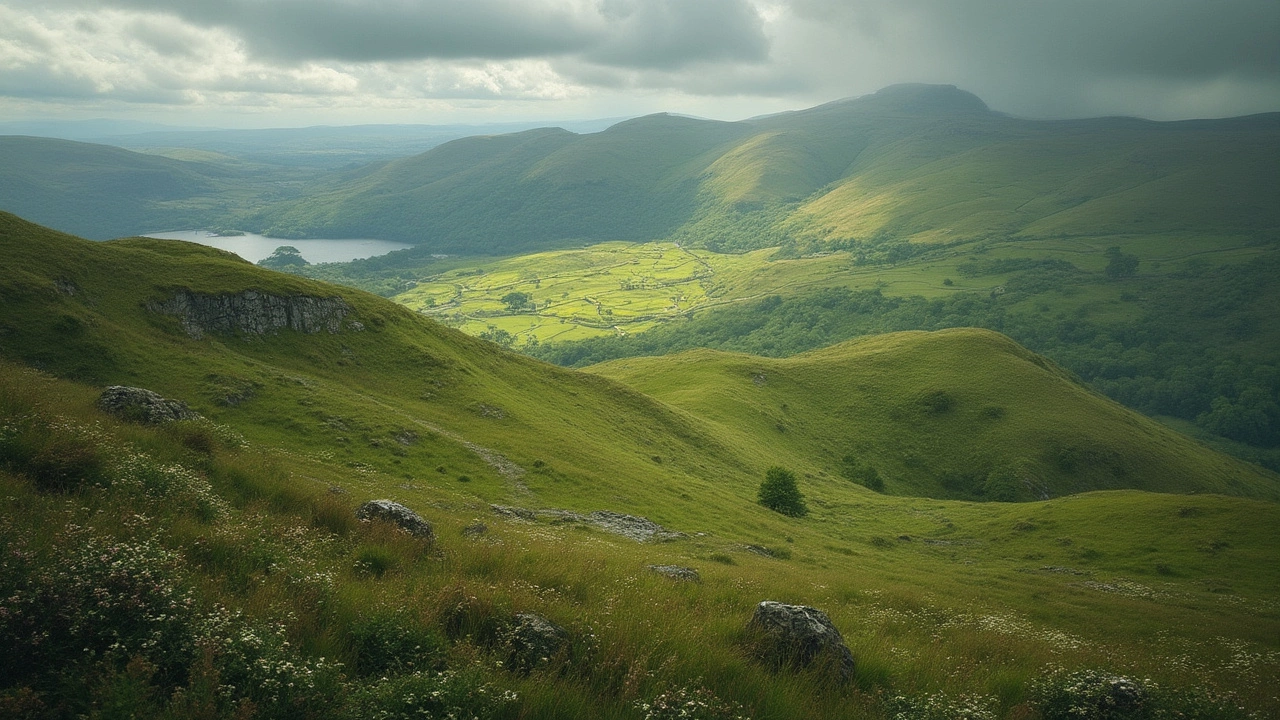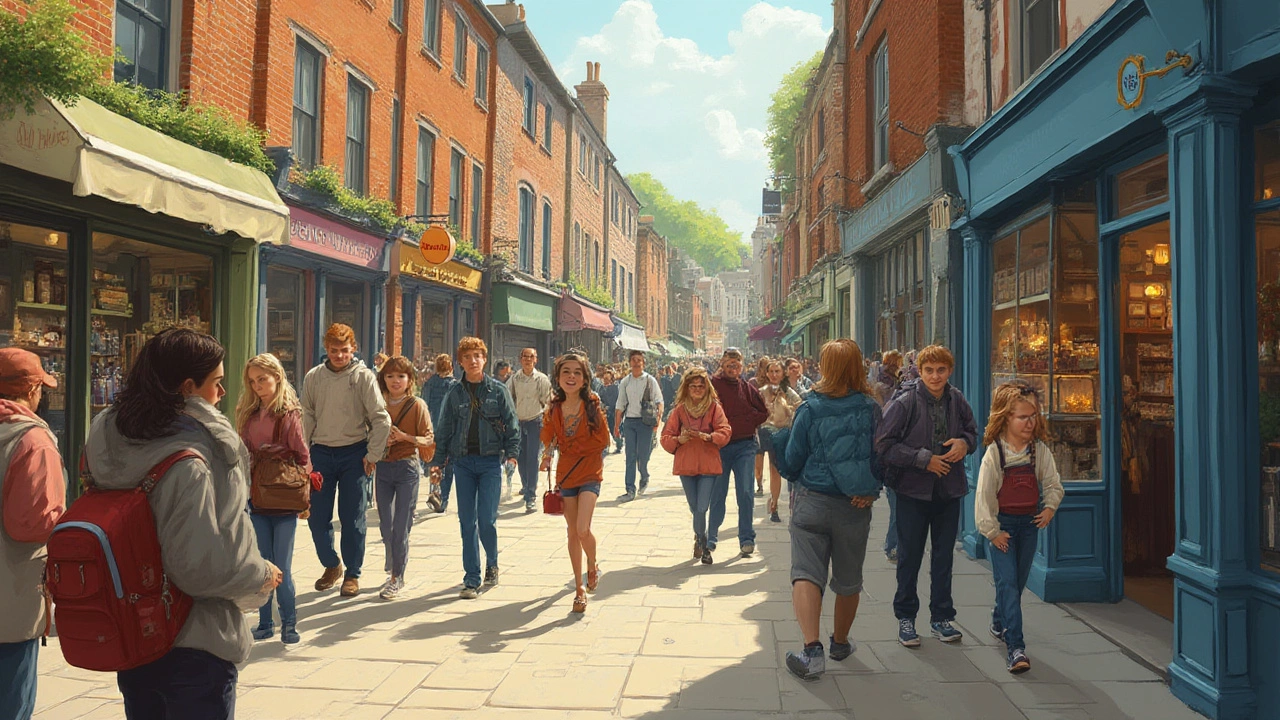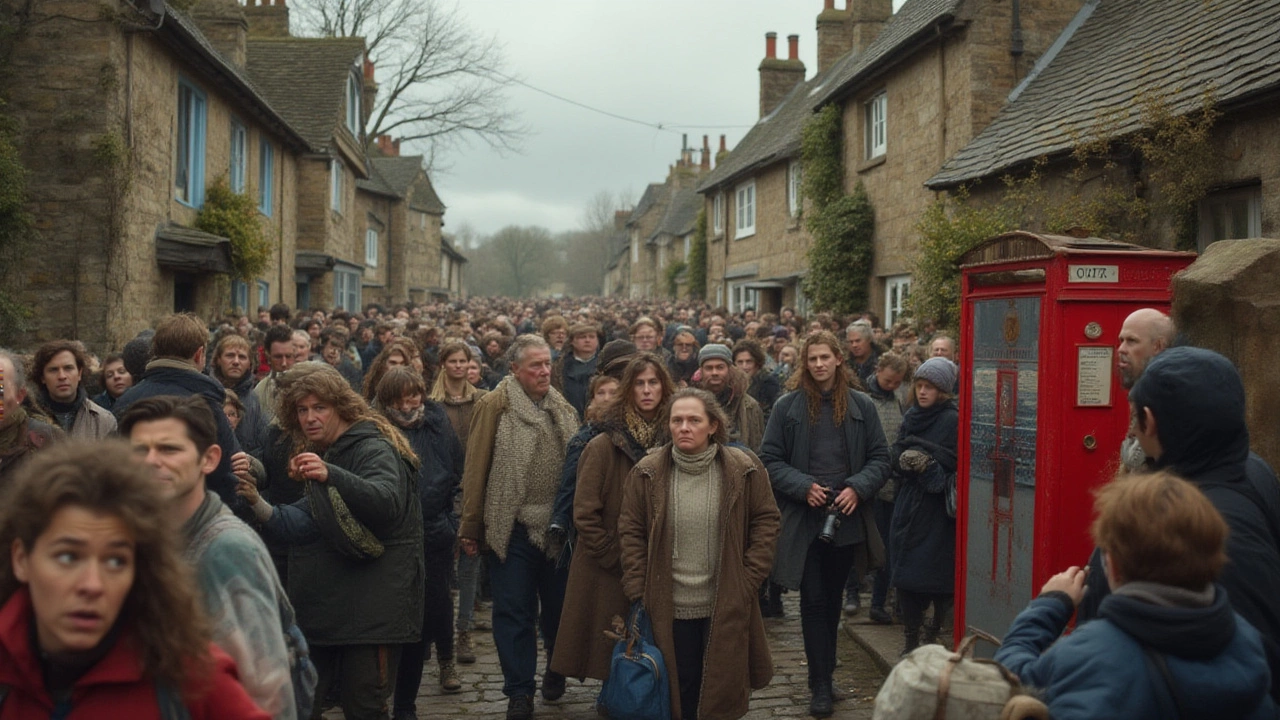You might think Big Ben's ticking and Stonehenge's standing stones only bring good vibes to the UK, pulling in tourists from every corner of the planet. But there’s a flip side—a messy, often ignored side—where tourism starts to wear thin on the places and the people. Walk down Edinburgh’s Royal Mile on a midsummer Saturday, and there’s hardly space to move. Quiet seaside villages are choked with cars, and even the local fish and chips seems twice the price it was just a few years ago. The truth? Tourism can leave bruises that locals feel long after the crowds have flown home.
How Over-Tourism Puts Pressure on Local Communities
London, Edinburgh, Bath—sure, these spots get the limelight, and tourism dollars can fill city coffers. But the story has a lot more dirt (sometimes, literally). Take the Lake District: during the peak months, you can't find parking, let alone peace and quiet. Locals in Ambleside joke about needing a passport to get through the crowds in summer. It’s not just laughs, though—villagers watching their rental markets dry up as landlords turn homes into short-term stays. A study by the Office for National Statistics found that over 54% of residents in St Ives and Falmouth raised concerns about being priced out of the housing market, mainly because of holiday lets and second homes.
Public services take a hit, too. Ambulances stuck in traffic jams of hire cars on Cornwall's narrow lanes; overfilled bins in the Highlands overflow, leaving litter in pristine landscapes. Cornwall Council spends over £3 million a year on public loos and street cleaning, money that often gets pulled from other budgets. Sure, tourism supports jobs, but most are seasonal, low-wage roles. When winter comes, shops close, jobs disappear, and what’s left is a ghost town. According to a 2023 report from Visit Britain, almost 25% of towns dependent on tourism in the southwest report population slumps in off-season, hurting local business survival.
Let’s not skirt around cultural impact. Not every town wants to turn into a real-life theme park. In Portree, Skye, locals joke that you can’t get a table at your own pub from May till September—not unless you book as 'John the American' three months ahead. Communities lose their character when everything caters to outsiders. Some festivals or traditions shift dates or change formats, just to work around the tourist calendar. It’s easy to lose what makes a place special if everything’s tailored for someone passing through looking for the perfect Instagram shot.
The squeeze isn’t just on space or housing. Everyday prices jump, too. Groceries in Cornish stores can be higher in the summer, not just because of inflation but because suppliers know a temporary flood of wallets is coming. Parking fees spike, and even petrol stations edge up their rates in heavy tourist zones. This slow squeeze leaves many locals out of their own neighborhoods, cafes, and even beaches during key months—a frustration city dwellers might never notice on a quick weekend trip.
So, what can communities do? Some suggest quotas—limiting Airbnbs or capping the number of coaches rolling into town daily. The Scottish government has discussed stricter permits for holiday lets. Others talk about a tourist tax, like the £2 per night proposed for Edinburgh. But solutions bring new questions. Is it fair to shut the gates on paying guests? Who gets to decide whose enjoyment matters most?

Environmental Damage: Nature’s Battles with the Tourist Boom
Imagine walking the coastal path at Durdle Door or trekking Ben Nevis and finding plastic bottles and snack wrappers poking out of the heather. Tourism leaves more than footprints; it leaves a mess. The National Trust spends more than £10 million a year repairing footpaths, walls, and erosion across beloved sites. The problem gets obvious in places like Snowdonia—every spring and summer, the park posts warnings about overflowing car parks, litter-strewn trails, dogs chasing wildlife, and erosion of delicate peat bogs. Researchers from Aberystwyth University found that, in 2023, footpath erosion in Snowdonia increased by 19% compared to 2017, mostly because of heavier tourist traffic.
Wildlife also pays the price. Seabird colonies along the Yorkshire coast face regular disruption as people stray from paths for selfies with puffins and seals. In Cornwall, dogs off leads on popular beaches can scare protected bird species during nesting season. It adds up: the RSPB caught more than 85 incidents of nest disturbance in 2024 alone—double what they’d seen in 2021. Chasing that perfect view can trample rare plants in the Yorkshire Dales and Lake District, disrupting delicate ecosystems that take centuries to recover.
Then there’s waste—so much of it. Take Brighton Beach after a scorching July weekend. Council teams haul off 60 tonnes of litter in a single evening. Disposable barbeques leave singed grass in Royal Parks, and mountains of single-use plastics turn up in bins and hedgerows. Even sewage can hit the headlines: water firms sometimes release untreated wastewater when infrastructure gets overwhelmed by thousands of extra flushes and showers.
Green spaces feel the strain, but so do national parks. The UK has 15 of them, and according to National Parks UK, they saw a record 120 million visits in 2022. Some parks have to replant hundreds of trees, manage wildfires started by unattended campfires, and even close off certain trails to allow the landscape to recover. Volunteers work round the clock, but at the end of the day, nature can’t always bounce back as fast as the crowds clear out.
Cars play a sneaky role here, too. Thousands of hire cars and campervans roll into peaceful valleys, clogging up single-lane roads and spewing out extra carbon emissions. The Campaign for Better Transport estimates that traffic into Snowdonia and the Lake District spikes by up to 40% in peak months, clogging up air, as well as arteries. Public transport helps, but not everywhere is connected, especially not those little dreamy spots you see all over social media.
There’s also the unseen impact: water use. Hotels and B&Bs need to wash sheets, run showers, and water gardens. During record-breaking heatwaves (like July 2022’s 40°C days), water companies in Devon and Dorset had to truck in water for households because tourism pushed supply over the edge. It only takes a few dry weeks and a couple of hundred thousand guests to tip some villages into “hosepipe ban” territory.
With all these challenges, what’s being done? National parks have started working with tour operators to promote “leave no trace” rules. Snowdonia even tested “quiet zones” where visitors get encouraged to just listen, not shout. Some towns are pushing “shoulder-season” campaigns—nudging travelers to come in autumn or spring instead. But changing old habits takes time, clever marketing, and a whole lot of patience.

Economic Costs: The Double-Edged Sword of British Tourism
Tourism brings in £106 billion a year to the UK economy. That sounds like a win. But pause for a second. Where does that cash actually land? And who feels the pinch in the process? Visitors often spend in big chains or franchises—international hotels, online booking sites, and global tour companies take their share before the first cream tea gets poured. In fact, research in 2023 showed that just 30% of tourism revenue in the South West actually sticks in the local economy. The rest heads into corporate tills or out of the country altogether.
Now, let’s dig into the jobs. Sure, tourism supports thousands of roles. But many are temporary. Students pour drinks and make beds over summer; most of these gigs vanish when the crowds thin out. A report by the Resolution Foundation in late 2024 found that only 18% of roles in coastal tourism hotspots offered year-round, full-time security. That means plenty of folks stuck juggling two or three side hustles just to make the rent work during the cold months.
Property prices climb faster in tourist hotspots than in the rest of the UK. Try finding a family home in Tenby or a flat in St Ives if you earn an average wage—good luck. Estate agents have reported an average house price rise of 13% in the Lake District between 2022 and 2024, driven mostly by demand for second homes and holiday lets. That makes settling down tough for young families and pushes key workers out to nearby towns, resulting in school closures and longer commutes for locals.
The tourism boom also pressures local councils. Visitor infrastructure isn’t cheap—think car parks, toilets, lifeguards, litter collection, signage, maintenance, and rescue teams for hikers who underestimate a British hill in fog. According to the Local Government Association, councils across England spent £442 million on managing tourism-related services in 2023 alone, much of it coming out of budgets meant for education or social care. For smaller localities, especially in Wales and Cornwall, this cash crunch is real, and solutions aren’t always clear-cut.
That brings us to the sneaky side of tourism: gentrification. Quirky little high streets fill with cool coffee shops, boutiques, and artisan bakeries, which is great if you’re visiting. For someone who’s lived there their whole life, it means the butcher, post office, or bank might disappear for good. Locals face rising everyday costs, while the things they actually need get pushed out by stuff aimed at short-term visitors. The transformation can be so quick it feels like home changed overnight.
So, what’s the way forward? Some towns tackle these challenges head-on. Whitby and Keswick launched schemes to keep more tourist spending with local businesses, encouraging restaurants and hotels to use local suppliers through loyalty stamps and discount cards. Others, like the Isle of Skye, restrict the expansion of second homes with tougher planning rules. A few authorities have added extra council tax for unoccupied houses and holiday homes, which helps plug funding gaps for public services.
And what about travelers? There’s a lot you can do to help share the love, not just the pressure. Book stays directly with local B&Bs or independent cottages instead of big sites; eat at independent cafes, and pop into small shops for picnic bits. Try visiting in spring or autumn if you can, and respect any community notices or requests—those “locals only” signs aren’t just there to be grumpy.
Yes, tourism is massive for the UK—but no one wants to see the magic of Britain’s countryside, coast, and cultural gems flattened by too much of a good thing. Next time you’re heading out with your camera and suitcase, spare a thought for the folks who call it home—and the wild bits that have to outlast the crowds. The real trick isn’t to stop traveling, but to tread a bit lighter while you’re at it.

Menu